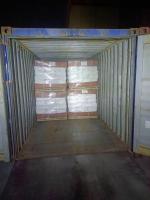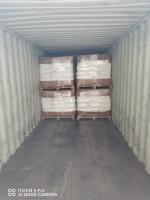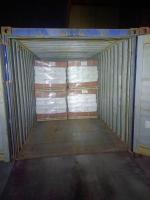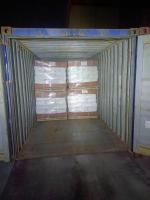Our Products
Polyacrylamide / Mud chemicals manufacturer mud chemical suppliers in China

Mud chemicals are essential additives used to formulate and maintain drilling fluids in oil, gas, geothermal, and water well drilling. Drilling mud is not merely water mixed with clay; it is a complex engineered system designed to meet specific geological and operational requirements. Mud chemicals are added to improve rheology, control fluid loss, stabilize the formation, manage solids, enhance lubrication, and ensure drilling safety and efficiency. Without properly selected mud chemicals, drilling operations would suffer from instability, stuck pipe, poor hole cleaning, low penetration rates, and environmental issues.
Mud chemicals perform multiple specialized functions, each contributing to the overall performance of the drilling fluid system. Below is a detailed explanation of the primary functions of mud chemicals.
1. Wellbore Stabilization
One of the most critical functions of mud chemicals is stabilizing the wellbore. Many formations, especially shales and clays, tend to swell, hydrate, or break apart when exposed to water. Mud chemicals help overcome these challenges through:
● Inhibitors
-
Potassium chloride (KCl)
-
PHPA (partially hydrolyzed polyacrylamide)
-
Glycol and silicate additives
These chemicals prevent water from entering clay structures, reducing swelling and preventing sloughing.
● Encapsulating Polymers
Polymers such as PHPA coat shale surfaces and provide a thin protective film that strengthens the wellbore wall.
Result:
-
Reduced borehole collapse
-
Lower stuck pipe risks
-
Improved drilling safety
2. Rheology Modification and Viscosity Control
Mud chemicals control the viscosity, gel strength, and flow properties of drilling fluids to ensure efficient performance. Proper rheology ensures:
-
Good suspension of cuttings
-
Smooth pumping
-
Efficient carrying capacity
Common rheology modifiers include:
● Bentonite
A clay that provides base viscosity.
● Polymers
-
CMC (carboxymethyl cellulose)
-
PAC (polyanionic cellulose)
-
Xanthan gum
-
APAM (anionic polyacrylamide)
These chemicals provide high viscosity with low solids content, essential for modern drilling fluids.
3. Fluid Loss Control
Fluid loss control is vital to prevent filtrate from invading the formation during drilling. Excessive filtrate can cause:
-
Formation damage
-
Thick filter cake buildup
-
Differential sticking
-
Reduced well productivity
Mud chemicals such as PAC, starch derivatives, modified cellulose, and synthetic polymers help form a thin, impermeable filter cake that minimizes fluid leakage.
Benefits:
-
Protects formation permeability
-
Reduces water invasion
-
Prevents wellbore enlargement
4. Cuttings Transport and Hole Cleaning
Effective hole cleaning is essential for preventing pack-off, stuck pipe, and reduced drilling efficiency. Mud chemicals enhance transport by:
● Increasing viscosity at low shear
Ensuring solids remain suspended when pumps slow down.
● Maintaining shear-thinning properties
Allowing easy pumping while still transporting cuttings effectively.
● Controlling solids dispersion
Using polymers like PHPA to keep cuttings intact and prevent fine particle accumulation.
Outcome:
-
Cleaner wellbore
-
Higher rate of penetration (ROP)
-
Reduced risk of downhole complications
5. Lubrication and Torque Reduction
Directional and horizontal drilling requires low friction between the drill string and wellbore. Mud chemicals used as lubricants include:
-
Glycol lubricants
-
Asphaltic agents
-
Ester-based lubricants
-
Graphite and polymer beads
These chemicals reduce torque, drag, heat, and mechanical wear on drilling equipment.
Operational advantages:
-
Prevents stuck pipe
-
Improves slide drilling
-
Extends bit and motor life
6. Density Control
Controlling mud density is crucial for balancing formation pressure and preventing well control issues. Mud chemicals used for density management include:
● Weighting agents
-
Barite
-
Hematite
-
Ilmenite
These increase hydrostatic pressure to counter formation pressures.
● Thinners and dispersants
Reduce viscosity when barite makes mud too thick.
Benefits:
-
Prevents kicks
-
Avoids blowouts
-
Maintains safe pressure balance
7. Solids Control and Flocculation
Excess solids in drilling mud reduce performance and increase costs. Mud chemicals assist in solids management by:
● Flocculants
-
APAM (anionic polyacrylamide)
-
Synthetic co-polymers
They gather fine particles into larger flocs for easier removal with shale shakers, desanders, desilters, and centrifuges.
● Dispersants
Break down unwanted solids to maintain fluid quality.
Results:
-
Cleaner drilling fluid
-
Lower dilution requirements
-
Extended mud system life
8. Formation Protection and Reduced Damage
Mud chemicals help protect the reservoir by minimizing:
-
Invasion of solids
-
Clay swelling
-
Pore throat plugging
-
Water block
-
Emulsion formation in the reservoir
Chemicals such as polymer encapsulants and optimized fluid loss additives ensure minimal impairment to reservoir permeability.
Outcome:
-
Higher production rates
-
Easier well cleanup
-
Lower stimulation costs
9. pH Control and Corrosion Prevention
pH regulators such as caustic soda, soda ash, and lime help maintain the correct chemical environment. Meanwhile, corrosion inhibitors protect drill pipes and casing in water-based mud systems.
Advantages:
-
Longer equipment lifespan
-
Reduced chemical attack on metal
-
Stabilized polymer performance
Conclusion
Mud chemicals serve as the backbone of drilling fluid technology. Their combined functions—including rheology control, inhibition, lubrication, fluid loss reduction, solids management, and reservoir protection—ensure that drilling operations proceed efficiently, safely, and economically. With the increasing complexity of drilling environments and directional well profiles, the importance of well-designed mud chemical systems continues to grow. These chemical additives are essential not only for operational performance but also for environmental compliance and long-term well productivity.





